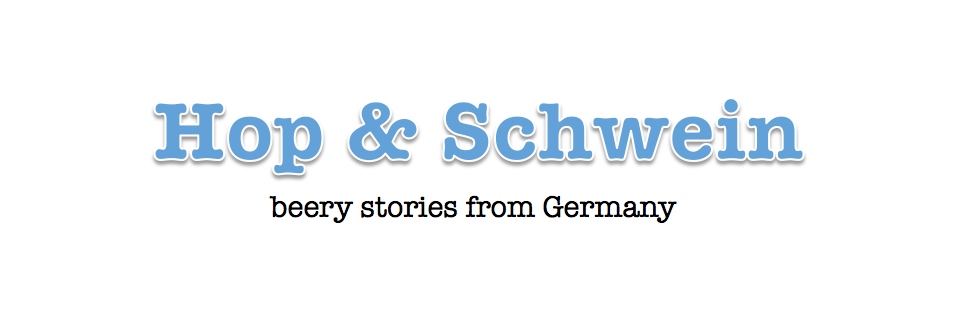On Monday 26th June my classmates and I went on a class visit to the Schumacher Brauerei in Düsseldorf. No, this wasn’t the kind of school trip where you have to get permission slips from parents/guardians and bring packed lunches. This was the type where you get to visit historical breweries and drink tasty Altbier.
Our group of 20 German brewer apprentices started the tour at promptly 10am and we commenced in the barrel cleaning section. Schumacher uses a range of interesting vessels to dispense their beer, including oak barrels (without any metal/plastic inner lining), Pittermännchen (10L gravity dispense barrels with lining) and whopping 1L bottles. Two apprentices manned the elaborate looking, semi-automatic mechanical barrel washer, which were then rolled downstairs to the filling section, where more apprentices and brewers were on hand to mark and fill the barrels all by hand.
Then our classmates Henry and Guido, who were kindly showing us their place of work, led us to the brew house. This was the part I was most excited about, having heard so much about the unique Altbier brewing methods and swanky Düsseldorf brewery equipment. And it certainly was a thing of beauty: an original copper, two-vessel brew kit in true German brewpub style. Schumacher use a 2-step decoction mash procedure to produce their wort and they regulate their run-off from the lauter tun using several swan neck taps, as shown below. Modern lauter tuns have central containers into which wort can run off from numerous ports but these labour intensive swan taps require the utmost attention from the brewer on duty to observe the pressure build up in the lauter tun.

We were subsequently led one floor higher to the pièce de résistance: the cool ship. We gazed and awed over the long, shallow empty stainless steel pool where the wort is partially cooled to 65°C then transferred to the less impressive looking Baudelot cooler down two levels to reach pitching temperature. I had seen this piece of equipment only once before at the Cantillon brewery and museum in Brussels where inoculation from wild, local yeasts is not only allowed but actively encouraged. Schumacher, on the other hand, create a completely different, more controlled environment for the cooling wort in which measures are taken to prevent inoculation from the unknown.

After we completed our tour of the filtration and fermentation cellars, we proceeded to the beer garden for the final stop of our tour. We were greeted with a 20L wooden barrel of Altbier served in 250ml glasses and a hearty lunch consisting of Mett and Frikadellen. My classmates and I chatted, drank and ate in the early afternoon sun.
This tour allowed me to reflect on the Altbier beer style a little and appreciate that Brauerei Schumacher make a truly local, historical product that is, to the most extent, being produced the same way it was when Matthias Schumacher bought the brewery back in 1838. Whilst Schumacher have in recent years spread their creative wings to brew their Cascade and Galaxy hopped ‘1838er’ Altbier in celebration of their 175th anniversary in 2013 and their smoked Altbier, a creation from their apprentices, Schumacher remain very loyal to their bread and butter beer: their 4.6% Altbier. A North German ale with a balance of roast character and residual sweetness that is met by a fair dose of classic German hops. This beer is mostly sold in the two Schumacher brewpubs and the rest goes to bars, restaurants and retail customers within the city limits of Düsseldorf.

Finally I reflected upon the overwhelming likeness of Altbier to a classic English Ale, or more specifically English Bitter. Both style are top fermented (Altbier is fermented at slightly lower temperatures), copper-coloured and traditionally hoppy (although bitter is nowadays ironically quite the opposite). Munich malts and crystal/dark malts contribute to the deep brown colour and the full, dextrinous malt character, although Altbier is somewhat drier than your typical English ale. Both styles are best drawn from a cask or a barrel by gravity and are full of complexity and balance yet often subtle enough to be enjoyed as a session beer, whether it be in a beer garden in Düsseldorf or a country pub in England.

Ah-ha, someone else who’s willing to publicly state the obvious similarity between Altbier (in general, not just Düsseldorfer) and classic English brown bitter! It’s an interesting reminder of how German beer overlaps (or overlapped, before the Bavarian Colonisation) both the English and Belgian beer cultures, as well as the Bohemian.
LikeLike
Yep, this is oddly the only German beer style where plenty of English influence (or vice-versa) is at play. And perhaps some of the low carbed Kellerbiere from Franconia. I find they are incredibly balanced, around 4-5% ABV and bear similarities to English cask ale.
LikeLike